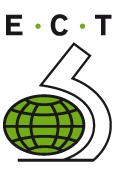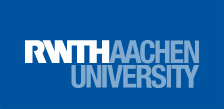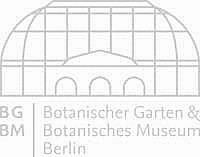 German [1]
German [1]
The representation of (soil) biodiversity includes not only the taxonomic level, but must also encompass species’ communities (biocoenoses), their composition and structure, which are strongly related to the ecosystem with its biotic and abiotic factors and the region in which they occur. This is particularly true for the various taxonomic groups of soil organisms, due to both their common relatively small-scale radius of action (limited dispersal) and their intimate relation to their habitat matrix (soil and soil litter). The “Thematic Network Soil Zoology” thus strives within the Global Biodiversity Information Facility to portray an ecologically coherent yet taxonomically heterogenic area of biodiversity – the soil fauna in an ecological context.
The basis of an ecological portrayal of biodiversity focuses on the species level: the distributional areal of an individual species as well as its ecological requirements (autecology, niche space) and functionality. The ecological preferences and optima of individual species can be derived from their distribution in space and time in conjunction with the ecological conditions of their habitats of occurrence. For this it is necessary to link species’ data with complex data on the biotic and abiotic habitat factors: a primary objective of the Thematic Network Soil Zoology and may be used for other such networks.
Species’ functionality is determined not only by their roles in ecosystem processes a growing field within soil biodiversity research but also based on, i.e., their vertical distribution within the soil profile; their trophic level (nutrient resources); their morphological, behavioural or physiological character traits; etc. Species with similar characteristics can be grouped into guilds or ecologically isovalent species’ groups, which may offer more information on the functional biodiversity of a specific site or region than pure species’ taxonomic identities. These aspects are still being developed within the Thematic Network Soil Zoology.
Furthermore, much information is derived from the depiction of biodiversity at the community level: which species occur together (community composition) and with which population densities (community structure) in a specific site, region or habitat type. The Thematic Network Soil Zoology aims at providing this information.
A further goal of the Thematic Network Soil Zoology is to provide guidelines and procedural recommendations for ecological soil-biodiversity research. This entails not only the methods for collecting and determining the various ecological groups of soil fauna, but also for the biotic and abiotic factors deemed most important for soil-biodiversity research in an ecological context.
The Thematic Network Soil Zoology presently contains the evertebrate taxon groups Lumbricidae [2] and Enchytraeidae [3] (Oligochaeta), Diplopoda [4] and Chilopoda [5] (Myriapoda), terrestrial Isopoda [6] (Crustacaea), Collembola [7] (Hexapoda), Oribatida [8] (Acari), Gamasina [9] (Acari) and terrestrial Nematoda [10] (Nematoda).
However, the Thematic Network Soil Zoology is a communal effort of many workgroups researching soil fauna both taxonomically and ecologically. Led by the Senckenberg Museum of Natural History in Görlitz, decisive in providing information provided within these pages have also been:
| ECT Oekotoxikologie GmbH |  |
| ECT Oekotoxikologie GmbH Böttgerstraße 2 – 14 65439 Flörsheim |
|
| www.ect.de [11] | |
|
|
|
| Staatliches Museum für Naturkunde Karlsruhe |  |
| Staatliches Museum für Naturkunde Karlsruhe Erbprinzenstraße 13 76133 Karlsruhe |
|
| www.smnk.de [12] | |
|
|
|
| RWTH Aachen - Institut für Umweltforschung (Biologie 5) |  |
| RWTH Aachen Institut für Umweltforschung (Biologie 5) Worringerweg 1 52074 Aachen |
|
| www.bio5.rwth-aachen.de [13] | |
|
|
|
| gaiac - Forschungsinstitut für Ökosystemanalyse und -bewertung e.V. |
 |
| gaiac - Forschungsinstitut für Ökosystemanalyse und -bewertung e.V. Aninstitut an der RWTH-Aachen Kackertstraße 10 52072 Aachen |
|
| www.gaiac.rtwh-aachen.de [14] | |
|
|
|
| Botanischer Garten/ Botanisches Museum der FU Berlin, Referat Biodiversitätsinformatik |
 |
| Freie Universität Berlin Botanischer Garten und Botanisches Museum Berlin-Dahlem Referat Biodiversitätsinformatik Königin–Luise-Str. 6 – 8 14195 Berlin |
|
| www.bgbm.org [15] | |
|
|
|
| Information on | |
| the content and structure of the database | |
| the data in edaphobase | |
| the analysis and query possiblities | |
| the cooperation partners and | |
| help and FAQ about edaphobase | |
| are available via www.edaphobase.org [16]
|
|